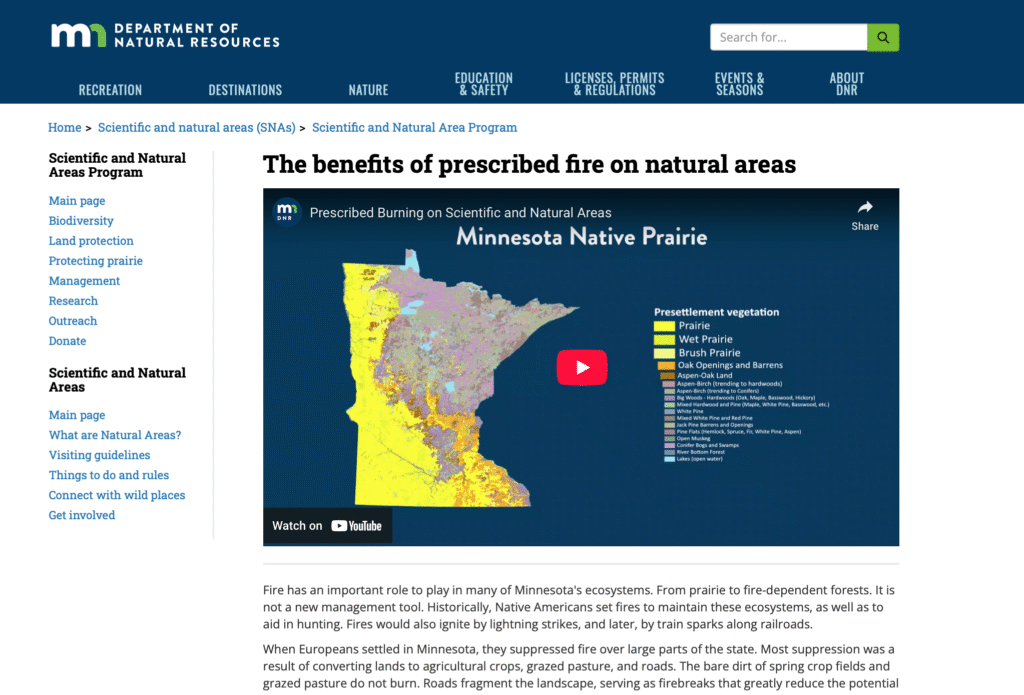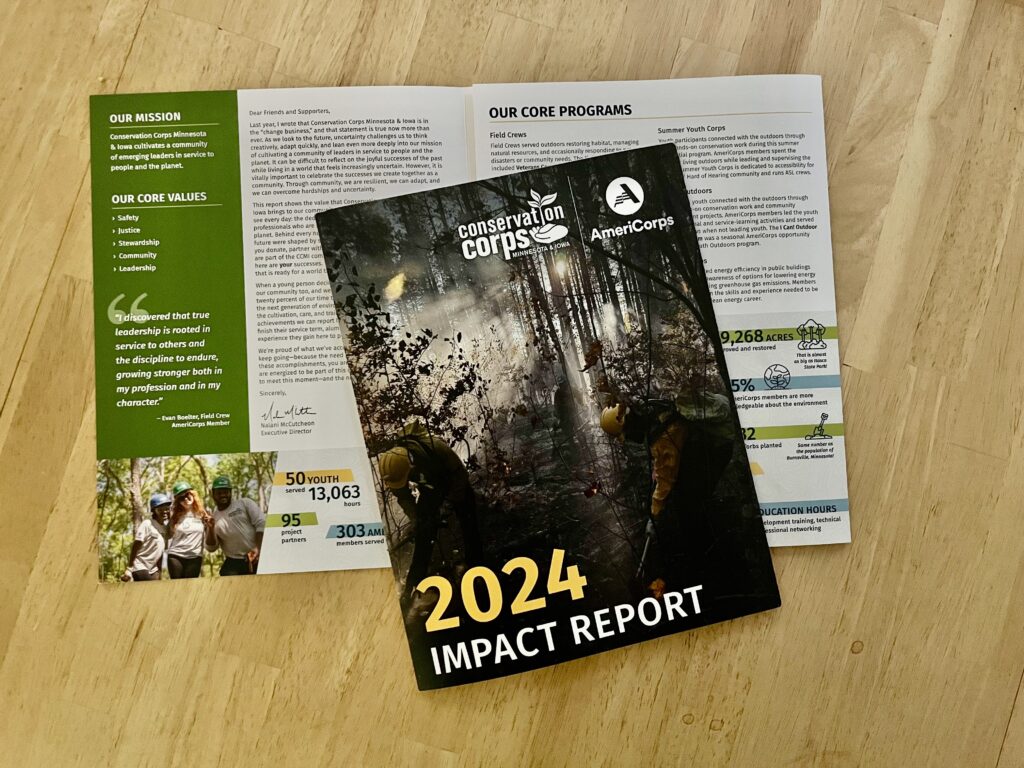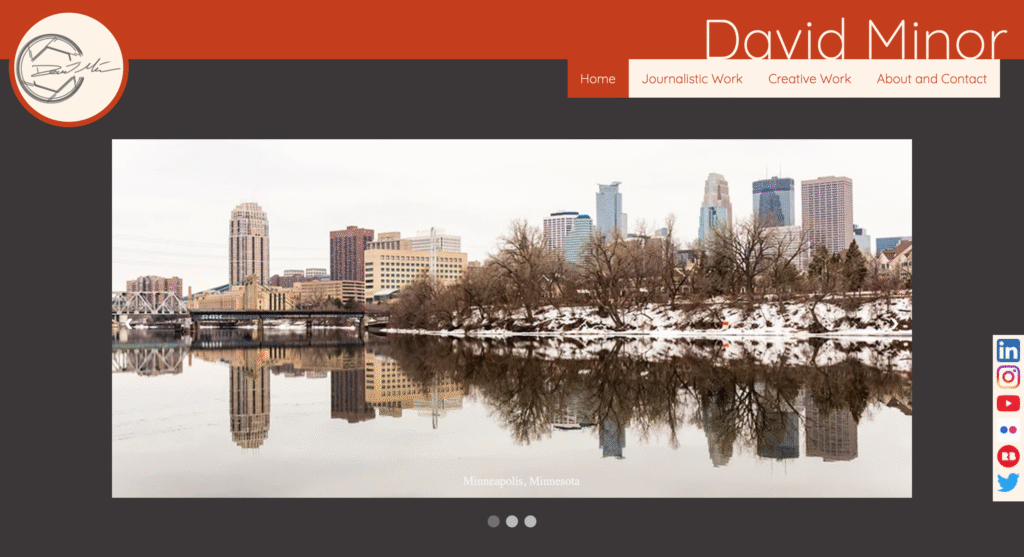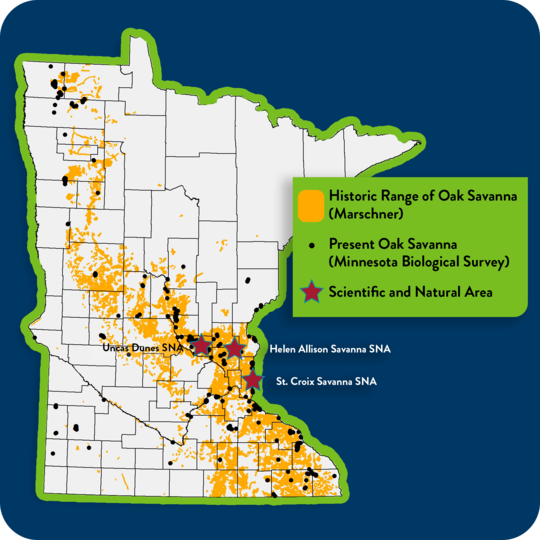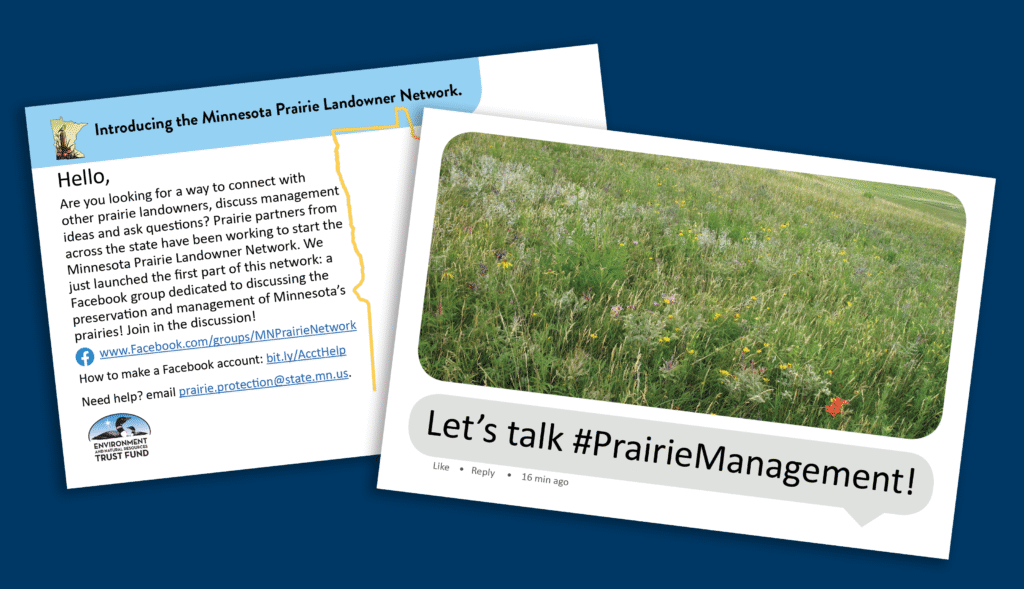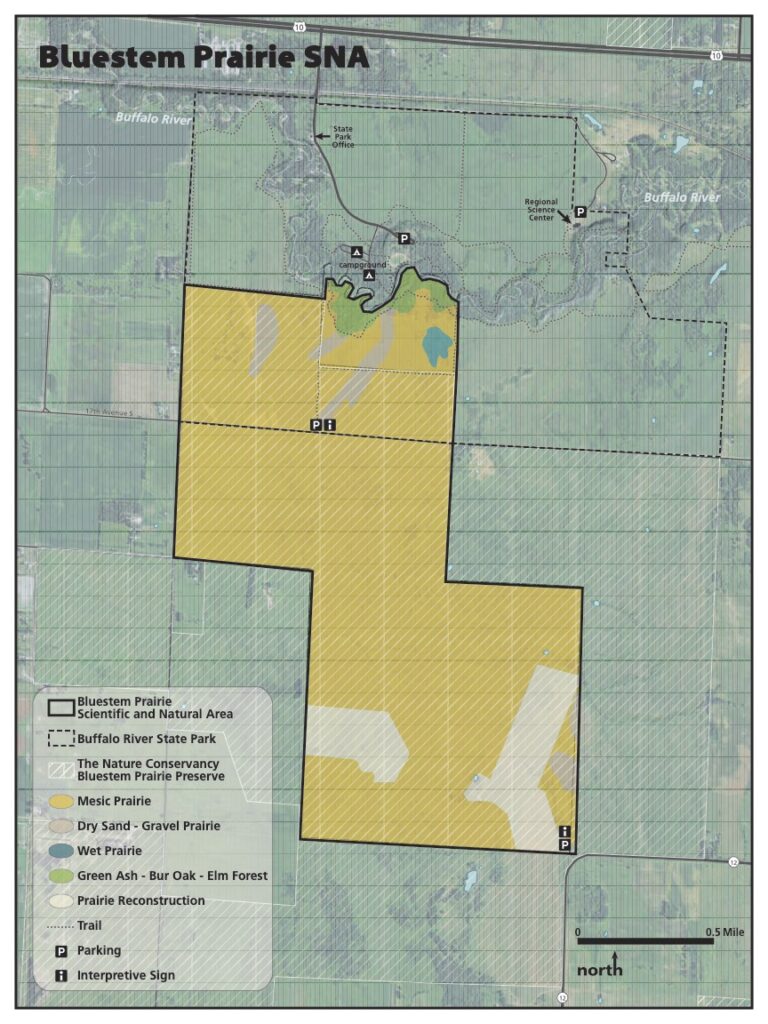I developed all the content for this external webpage about Prescribed Fire for the MN Department of Natural Resources. This includes writing the copy for the webpage with input from subject experts; writing the script for the video; taking all the photographs on the webpage; shooting all the video; editing the video using Adobe Premiere Pro; and using ArcMap, Adobe Illustrator, and Adobe AfterEffects to create animations for the video.
Excerpt from the webpage:
Fire has an important role to play in many of Minnesota’s ecosystems. From prairie to fire-dependent forests. It is not a new management tool. Historically, Native Americans set fires to maintain these ecosystems, as well as to aid in hunting. Fires would also ignite by lightning strikes, and later, by train sparks along railroads.When Europeans settled in Minnesota, they suppressed fire over large parts of the state. Most suppression was a result of converting lands to agricultural crops, grazed pasture, and roads. The bare dirt of spring crop fields and grazed pasture do not burn. Roads fragment the landscape, serving as firebreaks that greatly reduce the potential size of fires. These factors negatively impacted fire-dependent ecosystems. Today natural resource professionals use fire in a safe and controlled way to enhance these lands, and help prevent wildfires.Invasive species management is one of the important uses of prescribed fire. Invasive species frequently out-compete native plants, and can take over ecosystems. With fire, as well as other land management strategies, invasive species can be set back, allowing native species to re-establish. Using multiple strategies, degraded ecosystems can slowly be restored. The goal is to control invasive species, and maintain the native plant communities with periodic prescribed fire.
Benefits of a safe and successful prescribed burn:
- Combats trees and shrubs that shade out prairie and other shade-intolerant plants
- Removes old vegetation to make room for new growth
- Shifts soil nutrients to a state more favorable to prairie species
- Helps reduce the spread of invasive and pest species
- Consumes excess fuel, such as dead and downed trees, reducing dangerous and intense wildfires
- Burning in patches creates a mosaic of habitats for a variety of plants and animals.
